Standing at the foot of Mount Olympus, I feel a surge of emotions. Each rock and trail whispers tales of gods. As I breathe in the crisp air, I realise this sacred ground is more than just nature; it’s a source of healing, hope, beauty and peace.
The home of the Greek gods
The legendary mountain, well known from the classical Greek mythology as the residence of the Greek gods, is Greece’s highest peak. Mount Olympus was made Greece’s first national park in 1938, allowing us to enjoy its gorges, caves, plateaus and the spectacular views from them. It has exceptional flora (more than 1700 types of plants can be found here) and diverse fauna (wolves, foxes, wild cats, jackals, deer and chamois are lurking in the parks, with more than a hundred bird species living in its forests).
Climate
The Olympus is a Mediterranean mountain with warm summers and wet winters, and higher altitudes are usually covered with snow. While hiking here, one needs to be prepared with several layers of clothes, as for each 100 metres of climbing, the temperature typically drops by 0.5°C. Thanks to the proximity of the sea and its different elevation zones, the terrain and the vegetation are extremely diverse, constantly changing as you mount.
Staring at the mountain from the highway, I can understand why this mountain is in the centre of the Greek mythology. Its peaks are covered with fluffy clouds, towering cryptically over the surrounding plains. You look at them and immediately feel the urge to go and explore. You want to see what’s there, what creature is hiding in its dark green bushes. It might be just a jackal or Zeus himself.
Litohoro
The highest peak, the Mytikas, is at 2,917 m, also called the Throne of Zeus. One will need a well-trained guide to reach it, but there are several less strenuous routes to follow. As we had only one day here, we opted to climb to the Enipeas waterfall that is easily accessible from the charming town of Litohoro. With its beautiful church, traditional Macedonian houses with wooden balconies, tavernas, cafes, and bakeries offering delicious fresh food and beverages, Litohoro assures a warm welcome to its visitors. The narrow and steep streets might be a challenge if you are coming by car, but the view will make up for it. Litohoro also has a coastal part, next to the long, sandy beach, Pieria.
Enipeas Gorge
We went up on Agiou Dimitriou Street to the cemetery and continued on its right. Because of the heat and the constantly arriving tourist buses, I recommend going early morning for this hike and finishing around 10.30 at the latest. The Enipeas Gorge is easy to reach; a narrow footpath leads the way, offering absolutely amazing views of the massive mountain all around. At the beginning of the route, an elderly man greeted us with a broad smile. After chatting a bit in Greek, he gave us some advice on which way to go, how much time we need and where to be careful along the path. He also offered us to use the toilets behind him on the way back; it turned out he was the one looking after them. He was so friendly and cheerful that I had to take a picture with him.
You can stop at the waterfall, take some fantastic photos, and go back to the town, or you can follow the 9 km route alongside the Enipeas River Valley. As the hike is easy, you only need to watch out when another group of hikers appears. I listened to the sounds of the running stream and admired the surrounding nature of the valley, making it feel like a walking meditation: beautiful and calm.
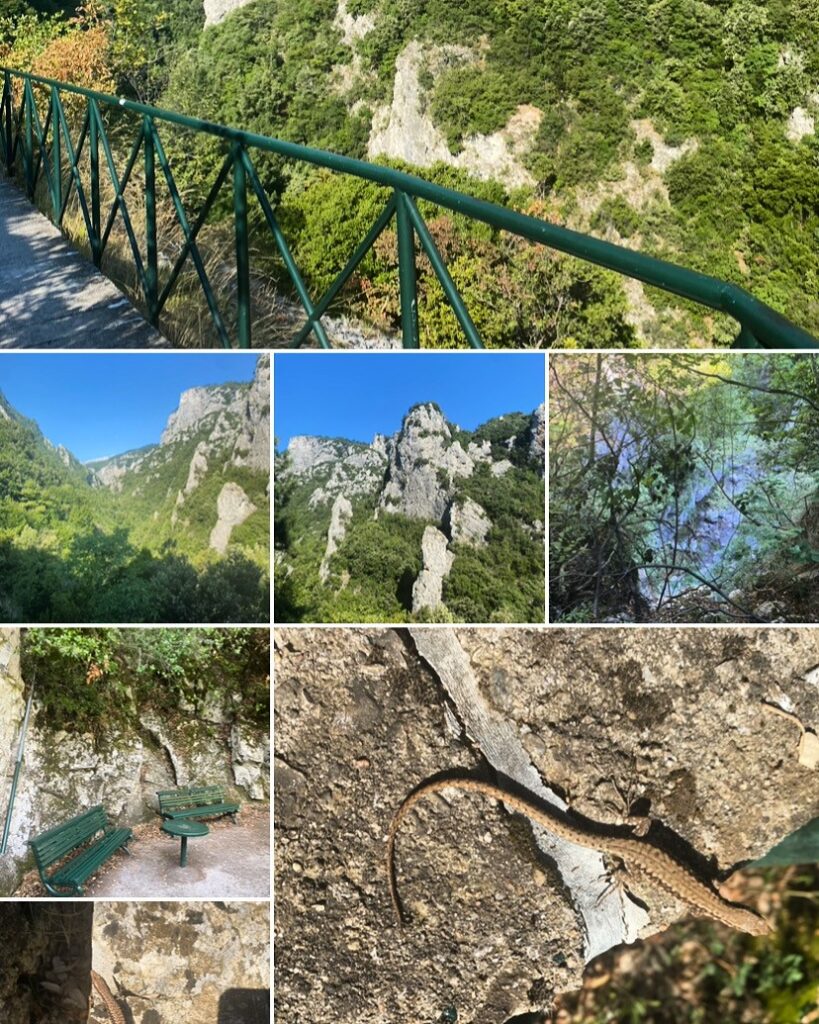
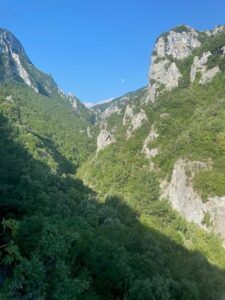
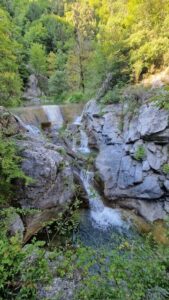
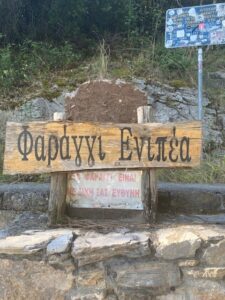
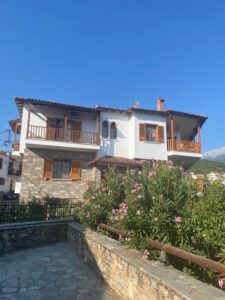
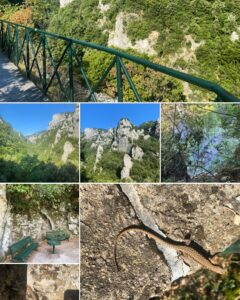
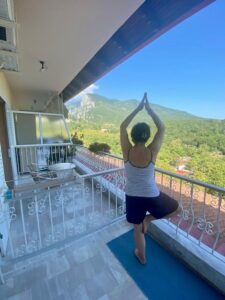
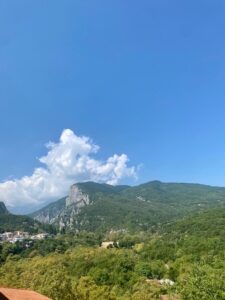
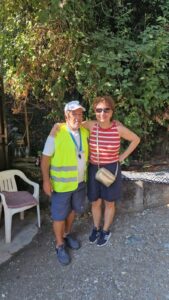

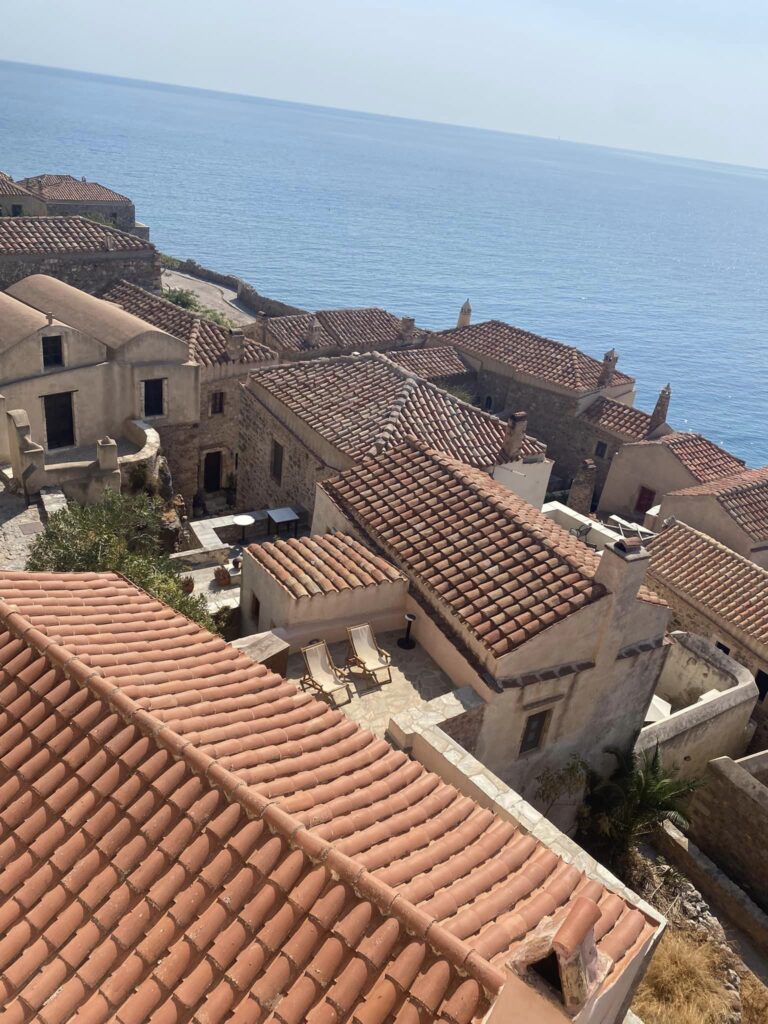
Thanks for the top tips for this fascinating location!
On your recommendation we climbed Mount Zas on Naxos this summer, but you gave us inspiration for the next adventure!
Thank you!
Thanks a lot for your kind comment, let me know if you need any more advice for your next adventure 🙂